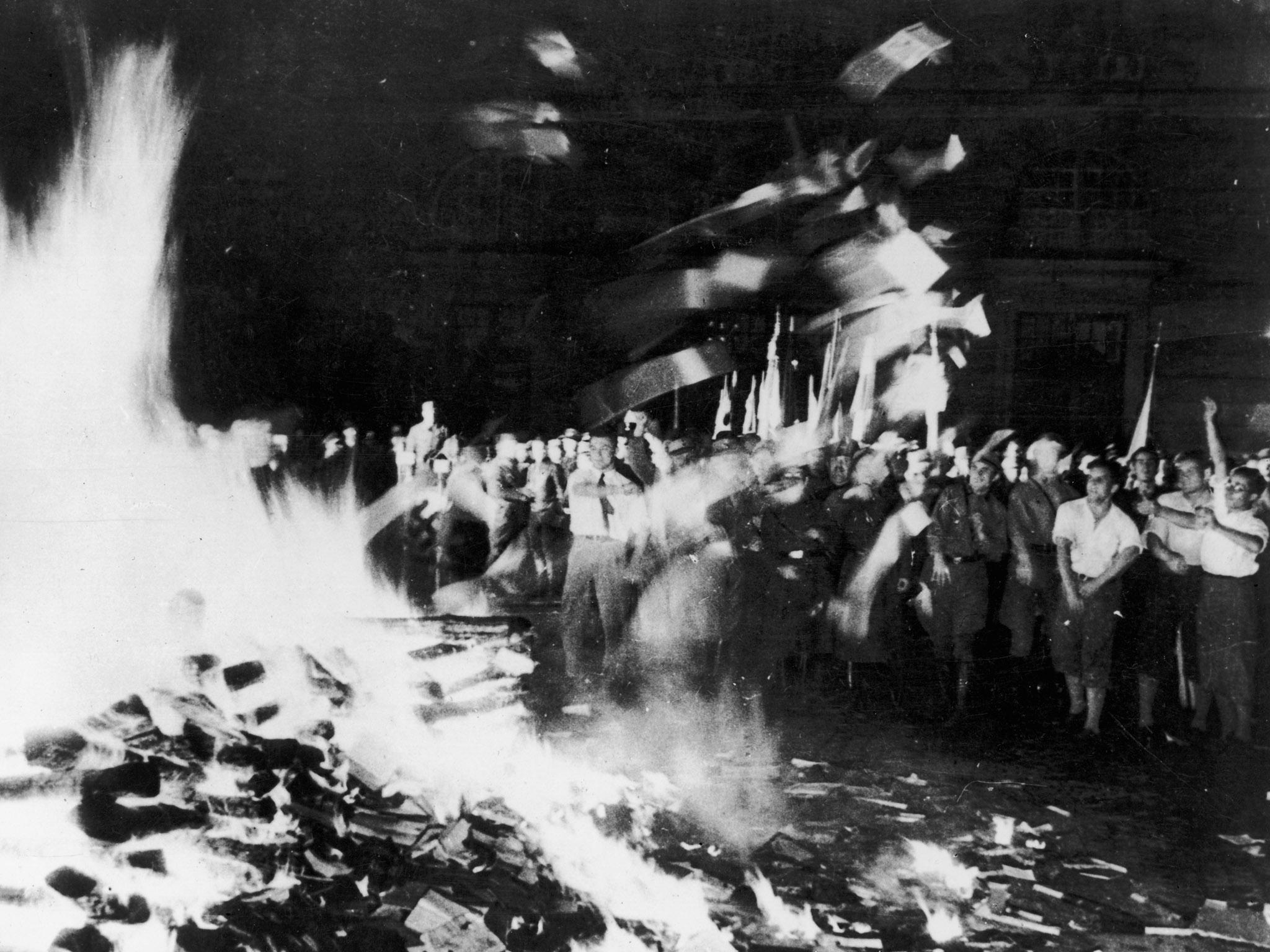From Hemingway to HG Wells: The books banned and burnt by the Nazis
Every Wednesday, Alex Johnson delves into a unique collection of titles

A Farewell to Arms by Ernest Hemingway
How I Became a Socialist by Helen Keller
The Iron Heel, The Jacket and Martin Eden by Jack London
Deutsche Ansprache: ein Appell an die Vernunft (An Appeal to Reason) by Thomas Mann
All Quiet on the Western Front by Erich Maria Remarque
The Outline of History by HG Wells
Monographs about Marc Chagall and Paul Klee
All works published before 1933 by Sigmund Freud, Bertolt Brecht, Stefan Zweig, John Dos Passos and thousands of others
No to decadence and moral corruption! Yes to decency and morality in family and state! I consign to the flames the writings of Heinrich Mann, Bertolt Brecht, Ernst Gläser, Erich Kästner
Joseph Goebbel, 10 May 1933, Berlin
It is impossible to put together an exhaustive list of all the books burnt by the Nazis between 1933 (when burnings started in earnest) and 1945, but estimates put it at well over 4,000.
An initial blacklist was drawn up by German librarian Wolfgang Herrmann and a 1935 issue of Die Bucherei, the Nazi journal for lending libraries, featured a list of guidelines for deciding which books and writers were fit for the flames.
This included anything written by Jewish authors (irrespective of the subject), all pacifist literature, all Marxist literature and anything by foreigners or German emigrants in a foreign country badmouthing the new Germany.
More specifically, anything supporting the Weimar Republic, primitive Darwinism, or encouraging decadent art was also doomed.

Anything about sexuality or sex education was highly suspect. Nor did previous success count for anything; Jack London, especially his The Call of the Wild, was one of the most popular foreign authors before Hitler’s rise to power but that was no protection for his books.
Matthew Fishburn, author of Burning Books, argues that having your books burnt was actually “a confirmation of a writer’s importance and credentials”. Indeed, Oscar Maria Graf demanded his works join those of his compatriots after he was initially left off the early lists (“Burn me!” he demanded).
The most famous burning was organised for 10 May 1933. Books were not simply tossed on to the pile; there were also “Fire Oaths” which were short statements read out explaining why certain works and authors had been selected. Remarque’s All Quiet on the Western Front, a huge bestseller in Germany, was one of the works specifically singled out because of its “literary betrayal of the soldiers of the world war”.
Freud was also namechecked because of his “soul-shredding overvaluation of sexual activity”.
Another Fire Oath accused journalist Alfred Kerr of “the arrogant corruption of the German language” – how he and his family made their consequent escape from Germany to London is told in When Hitler Stole Pink Rabbit by his daughter Judith Kerr, author of the Mog stories and The Tiger Who Came To Tea.
In 1934, two public libraries were established in opposition to the burnings.
The stock of both the German Freedom Library (Deutsche Freiheitsbibliothek) in Paris, and the American Library of Nazi-Banned Books in Brooklyn, New York, was made up of the works which were lost in the fires.
‘A Book of Book Lists’ by Alex Johnson, £7.99, British Library Publishing
Join our commenting forum
Join thought-provoking conversations, follow other Independent readers and see their replies
Comments
Bookmark popover
Removed from bookmarks